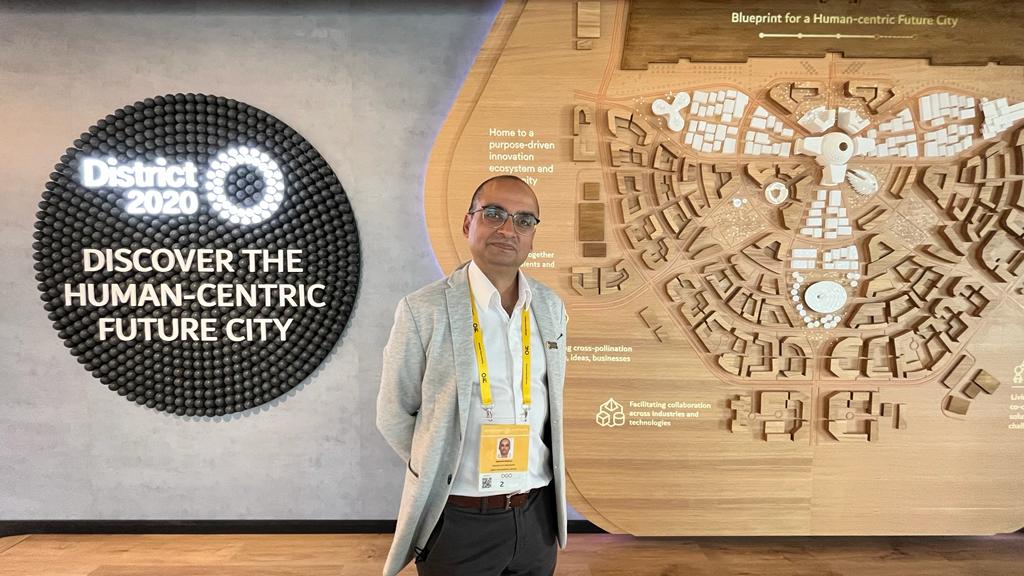São Paulo – Imagine living in a sustainable city that consumes less power and is focused on the well-being of people who can easily cross distances of up to 15 minutes to get to their homes, workplaces, markets, pharmacies, entertainment venues and all daily activities on foot or by bicycle. That is the proposal of District 2020, the legacy of Expo 2020 Dubai that will start turning into a neighborhood-city as soon as the exhibition ends in late March 2022. The district is set to keep growing throughout its phases so that within 30 years it will be home to 150,000 residents.

ANBA interviewed Transition Unit senior vice president Sanjive Khosla (pictured above). He is responsible for managing the transition of the site of the megaevent into its legacy mode. “We’re responsible for overseeing the transition, putting into practice all plans and making sure they’re implemented, he said.
Human-centric city
District 2020 is a human-centric future city, Khosla said. “It was designed to be a 15-minute city, meaning that everything you have to do every day, every week and even every month is within a 15-minute distance on foot or by bicycle. You shouldn’t need a car only to buy groceries or go to the doctor or even for entertainment. Here you’ll’ have everything that you need,” he said.
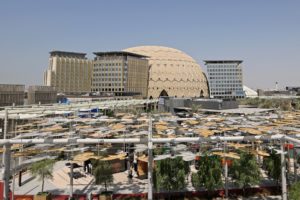
Another aspect of a human-centric city is sustainability. “Overall, we’ve put a lot of time, money and effort to assure that the whole event was sustainable. All buildings we constructed are LEED Gold or LEED Platinum certified (the highest green building certifications),” the SVP said. This means that they generally consume 80% less power and 5% less water than an ordinary building.
The Expo generates 22% of its own power with solar panels on the roofs of the buildings. “Some of our buildings are net zero like Terra that generates its own electricity with solar panels and whose water comes all from the sky and is recycle. It’s indeed a great example of what’s possible, and we’ll carry that on into the legacy project to assure that it turns into an actually sustainable city,” he said.
Having a human-centric city also means looking at healthcare and wellbeing, Khosla said. “We want to promote a healthy lifestyle and we’ll have running tracks and bike lanes, so that people can have fun and be one with the environment, the nature, and stay healthy. That’s how we want District 2020 to be a future city model,” he said.
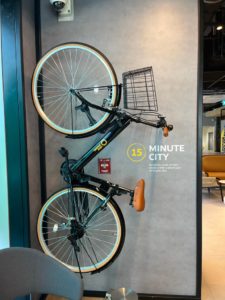
District 2020 will include community health and well-being facilities, with 10-km bike lanes, 5-km racing tracks, as well as 45,000 square meters of parks and gardens incorporating bodies of water and fully connected pedestrian crossings throughout the project.
The Expo ends on March 31, 2020, and the transition starts soon after, the SVP said. After a short period of repurposing and transitioning, the district will start being passed on to future occupants in the fourth quarter of 2022 and will continue in stages. Over 115,000 square meters of commercial building area will be made available starting October 2022, and more than 800 residential units will be delivery as of January 2023.
Khosla said that people from all origins and nationalities are welcome to live and work in the District 2020 but most residences will be one-bedroom studio apartments, which is likely to attract a younger population.

The District 2020 plans on having 150,000 residents by 2050. “I’ve lived in Dubai for 20 years. I’ve seen this place move from 400,000 to 3.5 million residents. I might be estimating 30 years now, but I wouldn’t be surprised if we reach this vision in half of that time, in 15 years. The way that Dubai keeps growing and even how we’re handling the pandemic, and even so hosting this amazing event. The ambition and the way that the city and people from here respond to challenges is astonishing, so I wouldn’t be surprised,” Khosla said.
The district is planned to become the fifth urban center of the city of Dubai alongside Downtown, Dubai Marina, Silicon Oasis, and Old Dubai (Deira).
Structure that remains
Besides residential and commercial neighborhoods that are going to be built during the transition phase of Expo 2020 Dubai, Khosla said at least 80% of the current structure of the exhibition will remain in the District 2020. Terra, Mobility and Mission Possible – Opportunity pavilions as well as the Jubilee Park and Al Wasl Plaza are some of the attractions that will remain in the project.

As for the country pavilions, Khosla said that they have autonomy to decide if they will stay, be dismounted and recycled of if they are going back to their countries. Some that are confirmed to stay are the United Arab Emirates, Saudi Arabia, India and Luxemburg pavilions.
Here’s more on this:
- Saudi pavilion at Expo: Technology and sustainability
- UAE pavilion at Expo the shape of a falcon wing
“Luxemburg is presenting us with their pavilion, and we’re still deciding what to do with it. Some pavilions will become cultural attractions, while others will have different uses. India’s, for example, will become India House, a venue for business meetings, cultural events, etc. Other pavilions can become innovation hubs for startups from that country, acting as a gateway for these companies. This will help keep the whole place operating and they are loving what’ve done at Expo and want to be part of the legacy,” he said

Other pavilions can be shipped back to their countries. The UAE took Milan and Shanghai pavilions to Abu Dhabi, Khosla mentioned. France has announced its plans on doing this with its pavilions to set it up in some of its cities, too.
“It’s important to make sure that everything will be recycled or reused. The Netherlands announced they will recycle its pavilion that they made from parts of used ships. We’re encouraging smaller countries with pavilions at the thematic districts to let them stay, but for those that don’t want it, we’ll convert them into office facilities and residences,” he said.
Khosla added that he’s encouraging some of the restaurants at Expo to maintain their facilities as well. “We may not need them all, but we certainly want to keep the most popular ones,” he said.

Some parts of the infrastructure will be removed, like entry and ticket sales areas that will have no further use in the district.
There are two planned hotels in the legacy project, including Rove Expo 2020 Hotel, which is already operating during the exhibition. You can learn more about District 2020 at the Rove Hotel’s lobby.
The Expo 2020 subway station will stay under a new name, and there’s a project to extend the red line to a new stop at the future Al Maktoum International Airport.

Just like at the exhibition, the district will maintain a highly connected and resilient digital infrastructure that includes a high-speed local network, a wide 5G and Wi-Fi coverage, environmental sensors, and a IoT capacity, and others.
The district is close the Dubai port and 12 kilometers from the new Al Maktoum International Airport that will be launched. Khosla said the Dubai International Airport is expected to just stay with the Emirates airline, while Al Maktoum will make the flights of other airlines.
Business
Besides being a human-centric future city, District 2020 is planned to be an innovation center where startups, small- and medium-sized enterprises, universities and labs work together to create innovations and solutions for global problems and challenges. “We want to focus on smart logistics and industry 4.0, smart cities and clean technologies,” the executive said.
Half of the buildings will be transformed into office buildings. Khosla said that 15% of the buildings have already been sold to some sponsors of the Expo. “Siemens will have a building for Siemens Industrial (an industry 4.0); Siemens Energy will have another building for clean technologies; Terminus Groupt, which made the Expo’s robots (Opti, concierge and security), will establish an international headquarters here – three buildings at one of the thematic districts,” Khosla said.
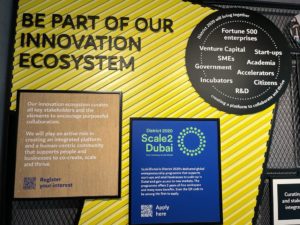
The district will also have a program called Scale2Dubai where innovation and technology startups can apply to gain two years of free rent for up to four people. The idea is facilitating the entry of startups and small- and medium-sized enterprises into this market and turning the district into a place where they can test their projects in a real-world environment.
The main industries that will turn their looks to the District 2020 first are construction, infrastructure and solar panels. “We will need all of them while we’re building all new phases,” he said. Companies from Brazil and around the world can apply to participate in the building of the new stages as well as establishing an office in the district.
Invitation
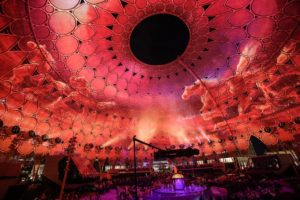
“We’re truly open not only from the perspective of the legacy, but we do want the public to come visit the Expo because when you visit the event you realize how special this place is. There’s no time to visit it like now, during the event, to check out this living place, day and night — don’t visit it just during the day, come at night, too, because it’s magical,” he invited.
His favorite places at Expo 2020 Dubai are the Al Wasl Plaza, Water Feature, the Vision, Mobility and Mission Possible pavilions, as well as the country pavilions of the UAE, Saudi Arabia, Germany, Russia, Pakistan, and India.
Here’s more on Expo 2020 Dubai:
- Expo: Egypt shows history, opportunities, future vision
- Water a key feature of Kuwait pavilion at Expo
- Morocco showcases Berber architecture at Expo
- Comoros Islands are known for vanilla, ylang-ylang
- Traditional meets modern in Qatar pavilion at Expo
- DP World presents future of transport at Expo 2020 Dubai
- Dubai is all about Expo 2020
Translated by Guilherme Miranda



